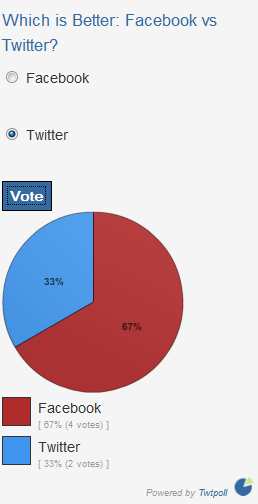There is a study on “how corporate blogging can help small businesses”, and it is found that small businesses with corporate blogs receive 55 percent more traffic than small businesses that don’t blog. As the blogging culture grows rapidly in the recent years, companies should be taking note on how to improve their blogs, attract more readers and get more results.
*I realized that most of our blog visitors stay not more than 3 minutes on our blog posts. I will keep this post as short, simple, precise as possible (as we understand time is money).
1. Establish a Content Theme and Editorial Guidelines
First, you should define your blog theme. Then choose a blog name that fits well with your company’s expertise. Your blog should provide information for consumers interested in your area of business. For example, ServerFreak’s blog provides information of web hosting, technology, social media, web design, etc. which is highly related to our business field.

Secondly, create a set of editorial guidelines that your bloggers will follow. Even though you company currently does not have a blogging team, or perhaps YOU are the one who blog for your company, an editorial guideline is important as it guides the following:
– what topics to cover?
– how the post should be written?
– how often to update the blog?
2. Choose a Blogging Team and Process

Choose a team of core bloggers to begin your blogging adventure. Select individuals that are knowledgeable and comfortable writing about the areas you would like to cover. Also, it’s key to choose people who write well and have a great online presence (I believe you do not want to see any grammar mistakes in your corporate blog). Of course, this highly depends on your company affordability to hire a blogging team, and also your willingness to “invest” – remember, it is proven that corporate blogging helps to grow small businesses.
3. Humanize Your Company
Don’t let your customers think that they are reading something from a company. The conversation should come between people (you and me), not between a brand and one person. Bloggers should have their own personalities and writing styles. Always keep in mind that your blog is about people connecting and conversing with people, not a corporation.
4. Avoid PR and Marketing
Do not sell your products through the corporate blog. There are other appropriate places for that, and your blog should not be one of them.
Your blog should add value to your readers. Readers like to read blog for more information, and they (including myself) seriously hate the pressure of hard-selling. And for the times that you do not have an opinion on an important topic, gauge your community’s opinion by taking a poll or interviewing key people. I personally think that poll is fun, and thus I have created a poll on our blog’s side bar. Have a look!

5. Welcome Criticism
Often times, corporations avoid to opening up their websites and blogs for commenting and interaction, because they are afraid of the harm that criticisms may cause. Make it a policy to welcome criticism, thinking of it as an opportunity for feedback and improvement. There are lots of ways to deal with negative feedback, so don’t be afraid to open up to your community.

6. Outline a Comment Policy
Be aware that if you open up your blog for full feedback (which you should), you will get a variety of comments — constructive, complimentary, hateful, and spam. Be prepared for everything. Create a comment policy that your team can follow, and make sure everyone is on same page. Outline the types of comments that should be responded to, deleted or passed along for follow-up.
7. Get Social

You can never under-estimate the power of social media. Make sure you utilize the “share tools” so that your visitors can pass along your content to their friends, or even friends of friends – that is when you can expand your brand awareness. Imagine if your readers find that your content is pretty interesting and are looking for the “Twitter”, “Facebook”, “Digg” buttons to share it, but they can’t find one in your blog, isn’t it you are driving away your potential customers?

Implement a social media strategy for your blog is vital too. Start creating the appropriate profiles across social networks that your readers and customers are active on. Usually, Facebook and Twitter are a good start. When you post on your blog, announce the new post on your social networks and ask for your reader’s opinions on the subject. Promote your social presence on your blog, by implementing links, buttons and widgets that link to your social profiles. This will enable readers to stay connected with you across platforms.
8. Promote Your Blog

Just as you would promote any other company initiative, get the word out about your blog. Share the URL on your website, social networks, business cards, e-mails, and advertisements. What I did is that I shared the
ServerFreak’s blog URL on my email’s signature. Everytime I reply an email to clients, they can see the link in my email. Of course, they might not click it, but at least they know that we do have a blog!
9. Monitor Mentions and Feedback
One way to get a pulse on your blog and its effects on the community is to monitor mentions and feedback.
To make things easier with Twitter, set up custom search columns in a Twitter client, such as Hootsuite, Tweetdeck, or CoTweet. The columns will update in real time, keeping you up-to-date on brand and blog mentions at all times.
10. Track Everything

I believe that you are always curious how many people are reading your blog? where are they from? which post they are most interested with?
You can track all this! If you currently do not have a web analytics tool, check out Google Analytics, a free analytics tool with an easy-to-use interface.
Learn from the data and adjust your blogging guidelines accordingly.
This post originally appeared on the American Express OPEN Forum, re-posted by Erica Swallow, and summarized by WOW.

Hand-picked related articles
Ways to Improve Your Site’s Ranking (SEO)
Use these actionable tips to take your SEO to the next level and send your website ranking up to the top of the search engine rankings. Gain more visibility, drive organic traffic, and set your…
Benefits Of SEO
Whether it's a new business or growing one, just think of your business popping up on the first page when…
Who Should Use Shared Hosting
If you fall into any of the categories below, shared server hosting might be suitable for you: 1. Small Businesses…
ServerFreak is ISO 27001:2022 certified
Here are 5 great reasons to cheer Firstly, let us tell you about the cert. ISO 27001:2022 is the world’s…